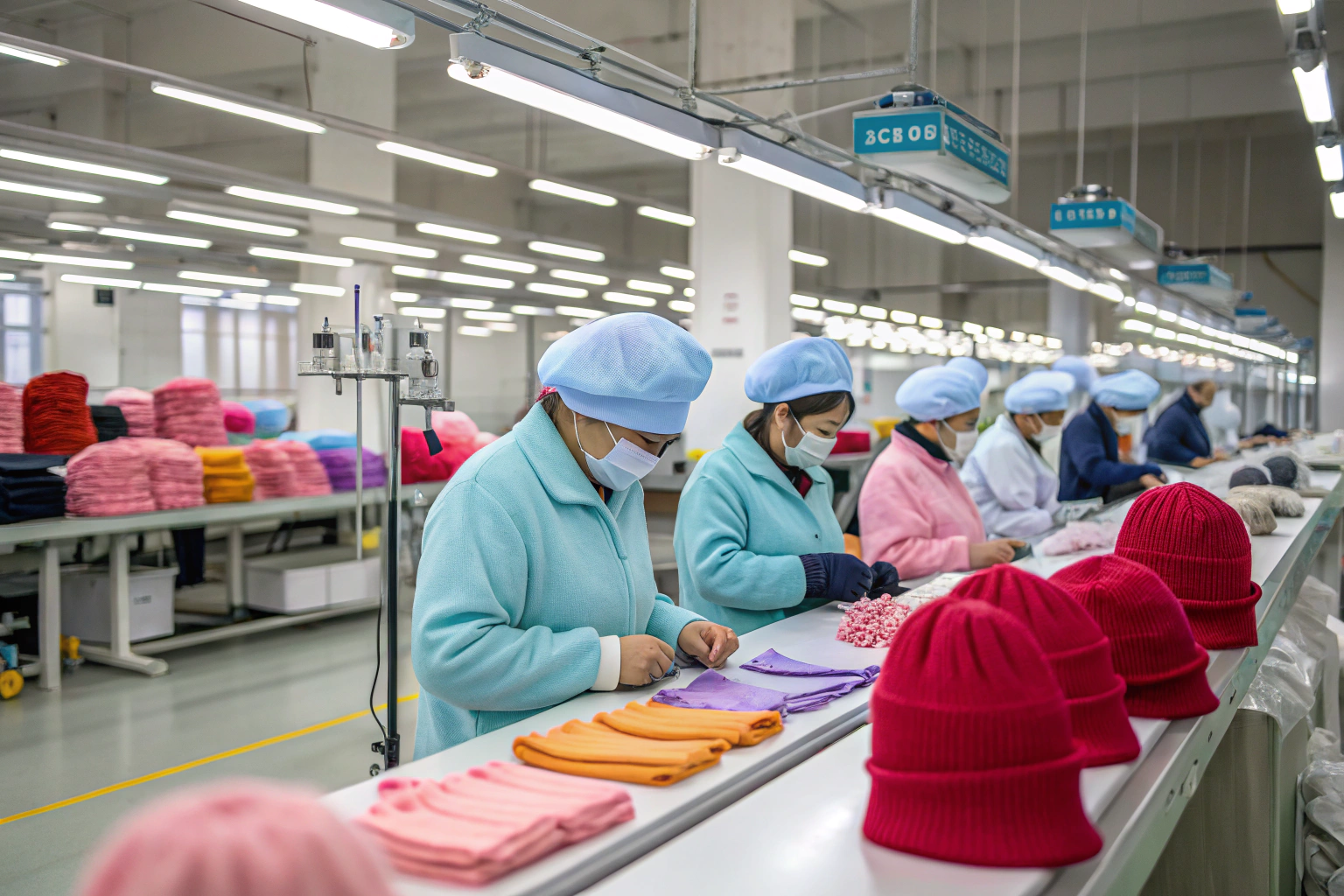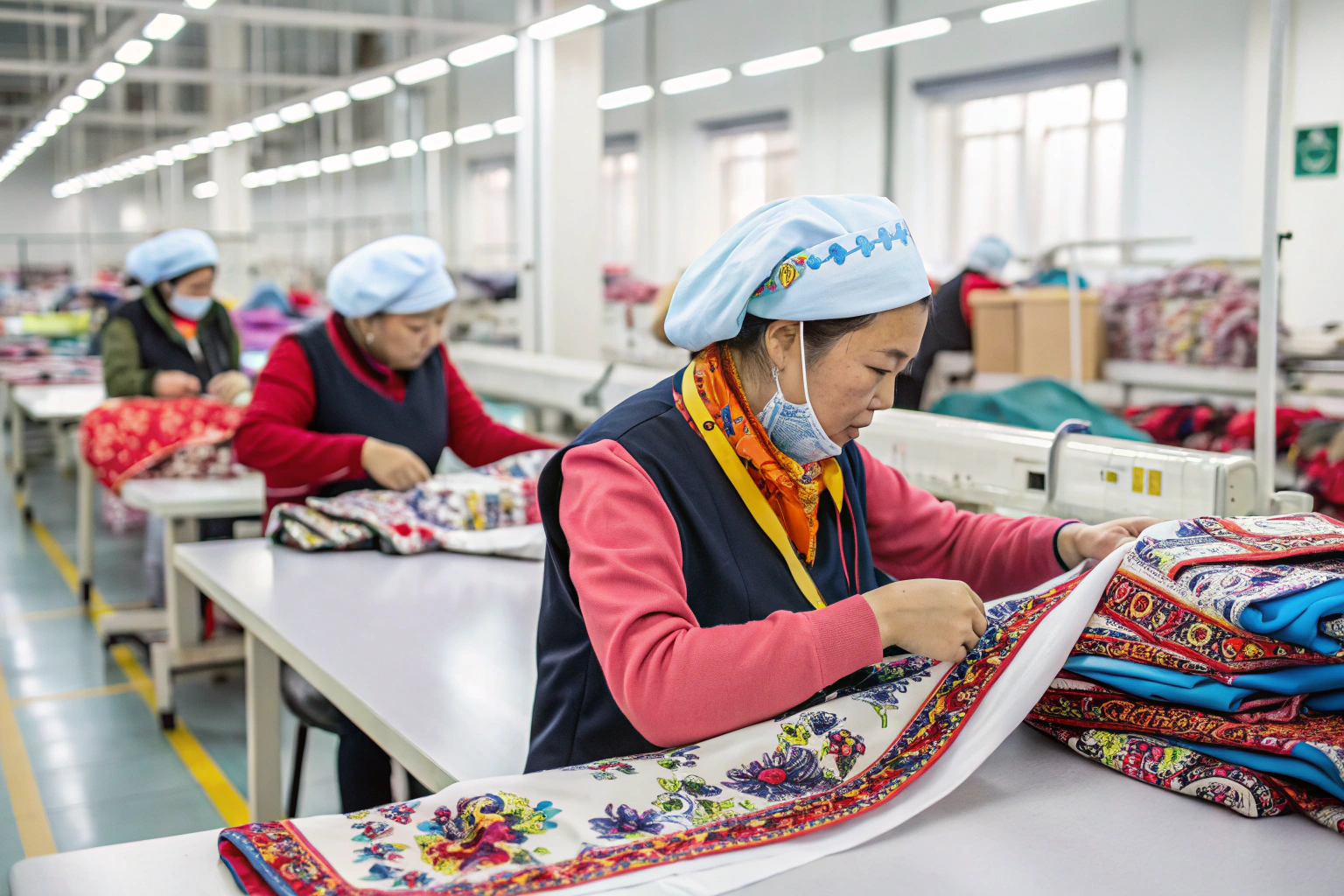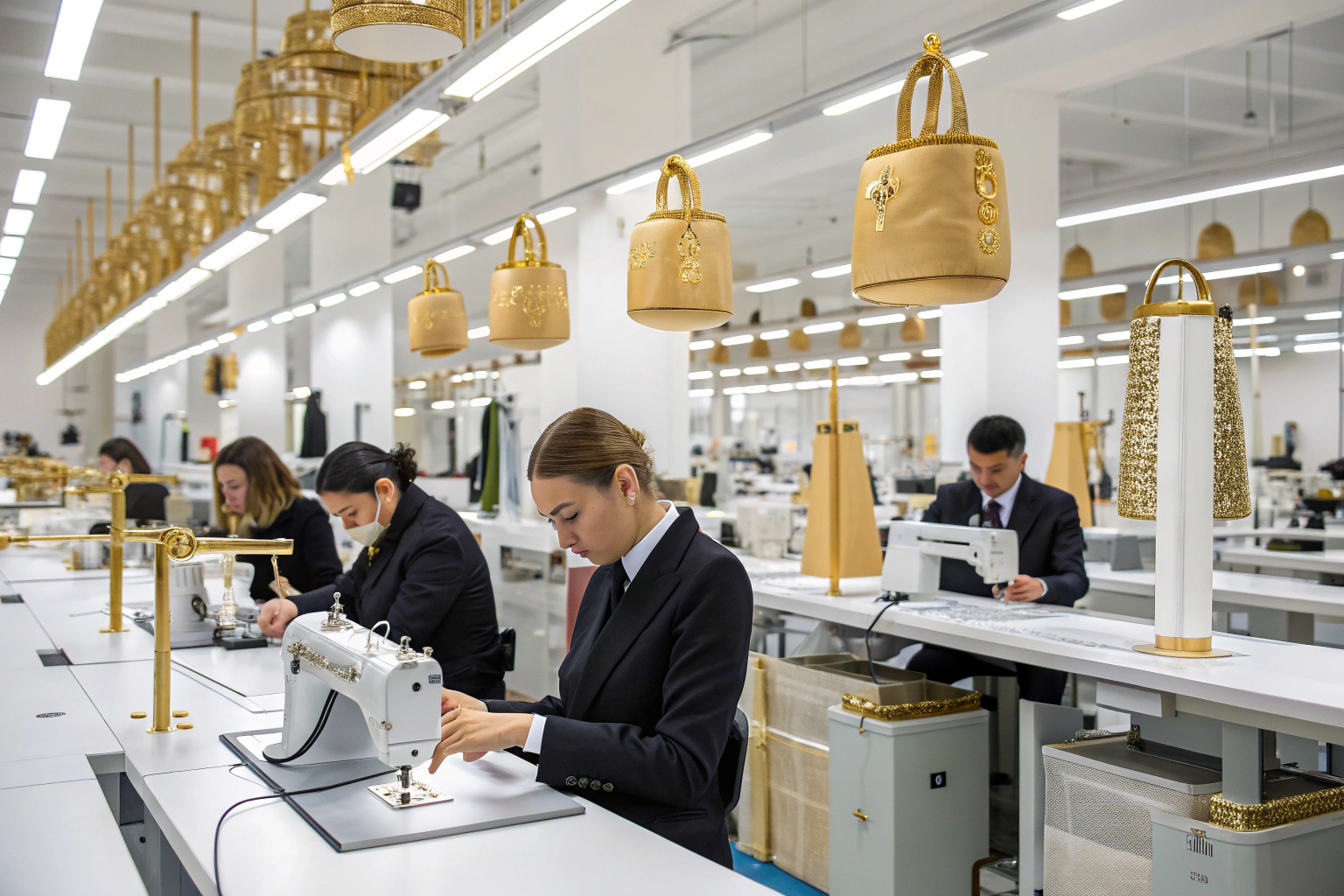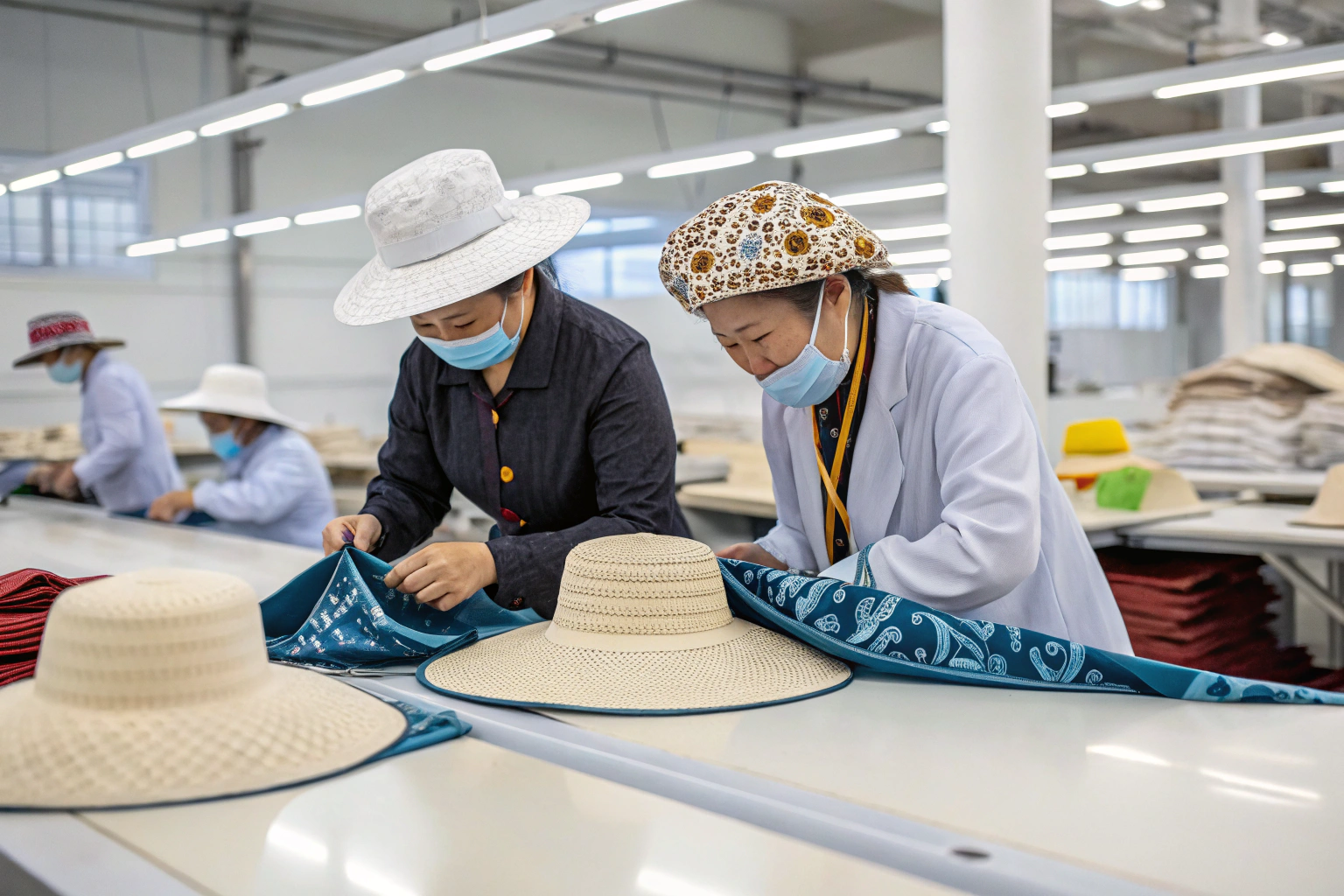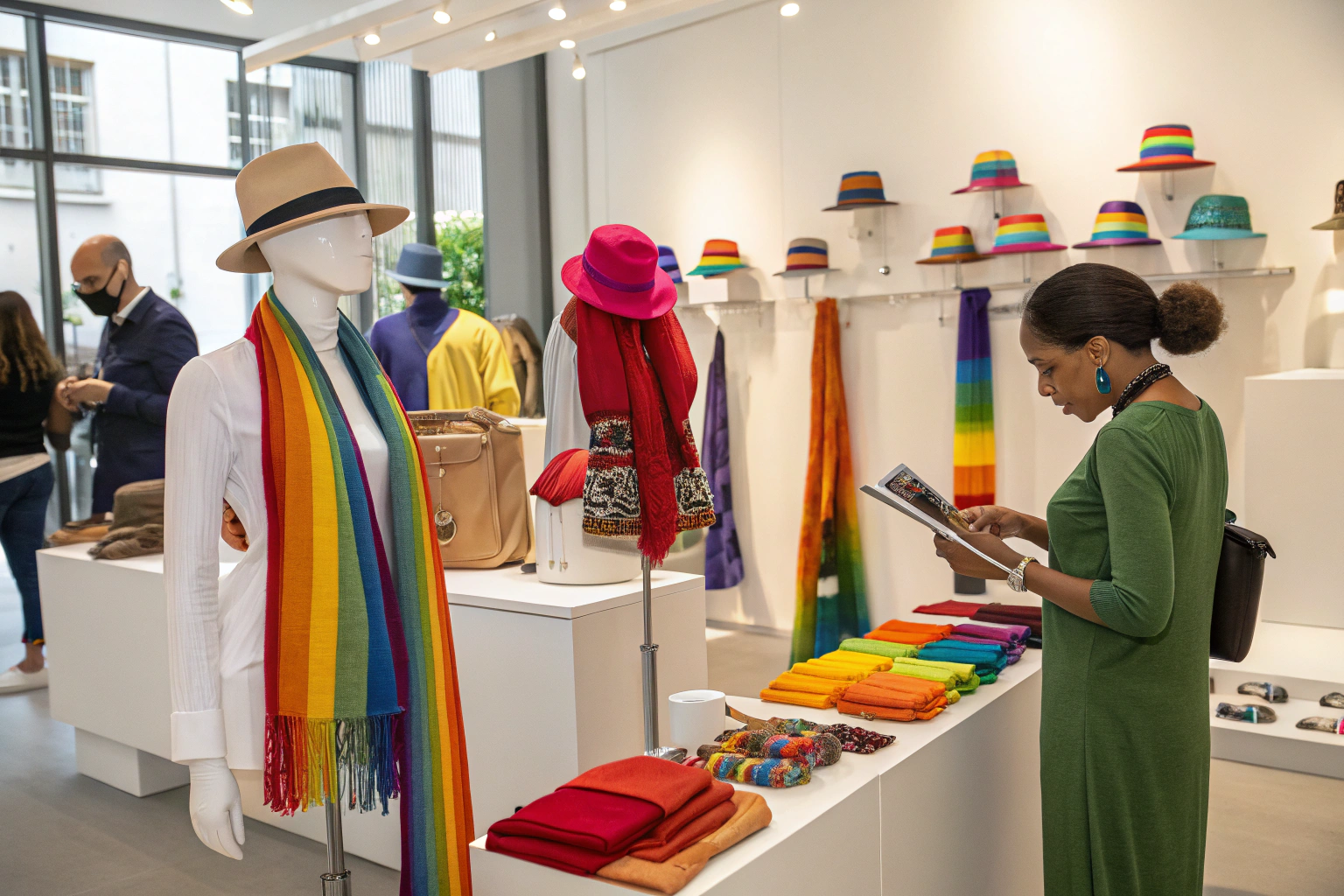Improper storage ruins accessories before they even leave the warehouse. You might ship on time—but deliver damaged, dusty, or bent goods.
To store accessories properly before shipment, use dust-proof packaging, climate control, clear inventory systems, and inspection protocols to protect both quality and brand reputation.
In our Zhejiang factory, we’ve helped brands avoid last-minute issues through smart storage. Accessories may seem small, but even tiny cracks or wrinkles can kill their shelf appeal.
How to Protect Accessories from Dust, Moisture, and Deformation?
Accessories may be stylish, but they’re fragile. Poor storage exposes them to dust, humidity, or pressure—and those issues aren’t always visible at first glance.
To protect accessories, use sealed packaging, silica gel packets, cushioned bins, and upright stacking. Avoid high shelves or floor contact, and rotate stock regularly.
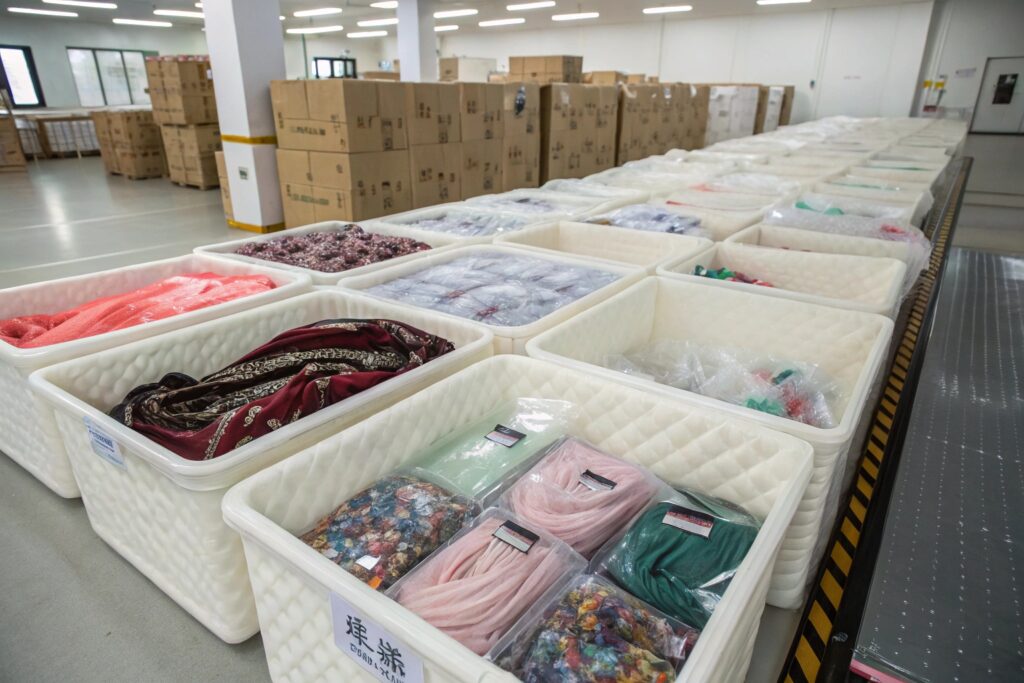
What storage methods prevent dust and deformation for hair accessories?
Hairbands, clips, and scrunchies are especially vulnerable. Dust dulls fabrics. Humidity curls elastic. Pressure bends shapes. That’s why we keep these items in sealed PE or OPP bags, grouped by SKU. For each carton, we include desiccant packs to fight moisture buildup. We store lighter accessories in bins with dividers so nothing stacks too tightly. Hanging racks also work well for bow clips or sample sets.
I remember one buyer received a shipment of velvet hairbands flattened during storage. It turned out the inner cartons were too small, and the workers had overpacked. We redesigned the box size, added foam pads, and never had that complaint again.
How can belts, scarves, and hats retain their form in storage?
Belts made from faux leather or PU can crack if exposed to air too long or coiled improperly. We store them rolled gently with protective tissue, then laid flat in trays—not standing upright. Scarves go into resealable pouches with breathable holes, avoiding too much compression. Straw hats need even more care: we use “nesting” storage, placing smaller hats into larger ones with soft padding between. And we always stack cartons with maximum height limits.
| Product Type | Risk Factors | Recommended Storage Methods |
|---|---|---|
| Hairbands | Dust, elastic curl | PE/OPP bags, dividers, upright bins |
| PU Belts | Cracking, air exposure | Rolled with tissue, flat trays, dry zones |
| Straw Hats | Deformation, mold | Nesting with padding, no floor stacking |
| Scarves | Wrinkles, odor | Folded in pouches with breathable holes |
What Storage Conditions Are Ideal for Different Materials?
Not all accessories are made equal. Cotton breathes. PU sweats. Straw absorbs. Storing them all the same way is a big mistake.
Different accessories require storage with specific temperature, humidity, airflow, and lighting conditions based on their materials—especially natural vs. synthetic ones.
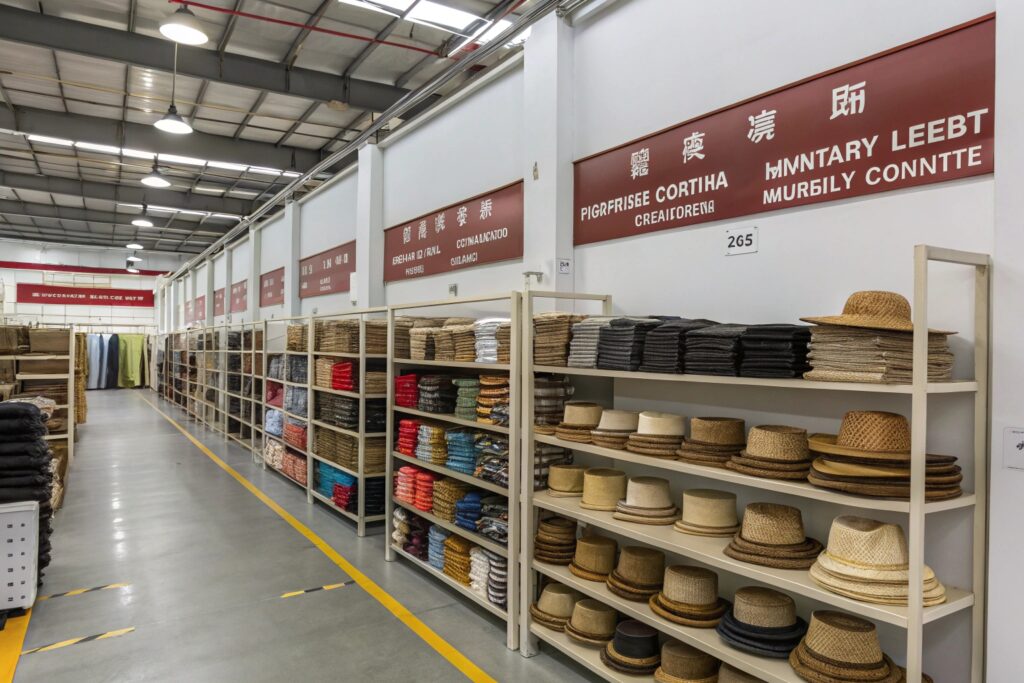
What humidity and temperature levels should I maintain for each accessory type?
Humidity is the biggest threat. We keep relative humidity in our storage zones between 45%–55%, which works well for most materials. For PU, vinyl, and coated fabrics, anything over 60% causes stickiness or blooming. Cotton-based accessories can tolerate slightly more but still mold if packed too tight. For straw or paper-based goods, we stay even drier, around 40–45%.
Temperature should remain between 18°C–25°C (64°F–77°F). High heat causes adhesive on glue-based items (like rhinestones or bow clips) to fail. I’ve had clients ask why their glitter clips lost stones—it was simply heat exposure before packing.
Should you use air conditioning or dehumidifiers in your warehouse?
Yes, especially in summer or rainy seasons. In Zhejiang, our warehouse is split into zones. We use air conditioning where accessories are packed, and industrial dehumidifiers where straw goods are stored. Each unit has a humidity monitor. We also do daily checks and rotate sensitive stock. For areas without these tools, use sealed containers with silica packs and avoid wood pallets, which can absorb moisture and release it.
| Material Type | Ideal Humidity | Ideal Temp | Notes |
|---|---|---|---|
| Cotton (scarves) | 50–60% | 20–25°C | Keep folded, avoid mildew |
| PU / Faux Leather | 40–50% | 18–22°C | Avoid direct sunlight or excessive warmth |
| Straw | 40–45% | 18–20°C | Use breathable covers, store off ground |
| Plastic / Acrylic | 45–55% | 20–25°C | Avoid stacking, store flat or upright with dividers |
How to Organize Inventory for Easy Picking and Packing?
It’s one thing to store goods. It’s another to find them fast, in perfect shape, when a courier deadline is breathing down your neck.
To streamline picking and packing, organize inventory by SKU and order frequency, use barcode systems, and clearly separate fragile from durable items.
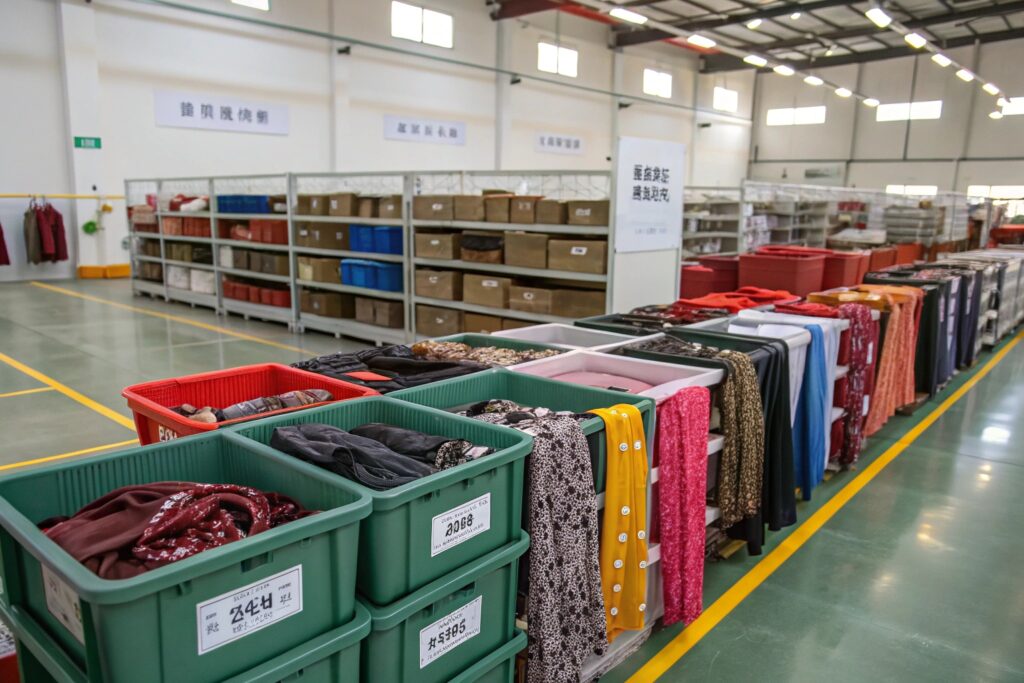
What layout helps improve speed and accuracy for accessory orders?
We separate our warehouse by product categories—belts, headwear, scarves, gloves—and color-code each section. Within each zone, we arrange by SKU. Fast-moving items are placed near the packing zone to reduce travel time. Slow-moving or seasonal goods are kept higher up or farther away.
We use plastic bins with removable dividers for small accessories like clips and rings. Every shelf is labeled with barcode tags that link to our WMS (warehouse management system). A handheld scanner pulls the correct item and quantity, reducing mispicks.
When one U.S. client scaled up orders last year, this setup helped us ship 30% faster with fewer mistakes—even during peak season.
What are best practices for packing stations near inventory shelves?
Packing should happen close to storage but in a cleaner, dust-controlled space. Our stations have anti-static mats, sealing tools, carton sizers, and scale checkers. We pre-sort accessories by order, double-check items, and take photos for records. Each team member has a checklist to verify packaging, labeling, and any custom branding.
| Inventory Feature | Best Practice Description |
|---|---|
| Fast-Mover Zones | Locate near packing stations for speed |
| Barcode Labeling | Reduces human error in item picking |
| Packing Station Tools | Include scales, mats, tapes, and double-check stations |
| SKU Organization | Divided by type, size, and customer priority |
| Dust-Control Zones | Especially for velvet, felt, or shiny surface accessories |
Why Pre-Shipment Inspection Matters During Storage?
You’ve packed everything. But before shipping, how do you know if anything got warped, dented, or misplaced in storage?
Pre-shipment inspection ensures that stored accessories match buyer expectations, are undamaged, and follow packaging instructions—before they reach customs.
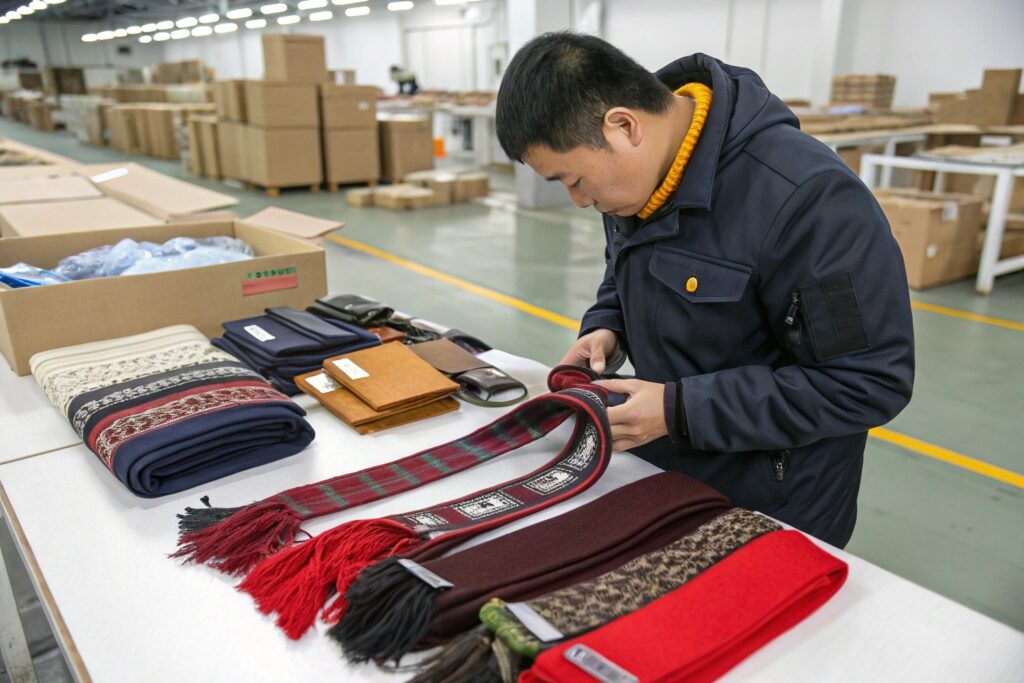
What does a proper warehouse QC check include before shipment?
At AceAccessory, we run a Final Quality Control (FQC) process inside the warehouse itself. This includes:
- Visual check of all packaging and labeling
- Sample opening of inner cartons for physical inspection
- Random item checks for shape, stitching, material faults
- Recount of quantity vs invoice
- Verification of branding or private label details
We inspect different types of products at different standards. For example, 20% sample check for scarves, 10% for bulky hats, and 30% for mixed accessories. If a batch has more than 2% defect rate, it gets repacked or replaced.
How can inspection during storage prevent downstream issues?
Inspecting before the goods leave the warehouse catches things that even packing staff may miss. For instance, I once caught a batch of belts that looked fine from outside, but inside, the inner boxes had watermarks from floor condensation. We changed the pallets, replaced some belts, and avoided what would’ve been an expensive return.
Also, many clients now require on-site photos and video walkthroughs of storage and QC before authorizing payment. By integrating storage inspection into your process, you reduce surprises, avoid rejections at customs, and gain your client’s trust.
| QC Step | Purpose |
|---|---|
| Visual Carton Inspection | Checks packaging, labels, carton condition |
| Inner Carton Sampling | Catches mold, dust, incorrect SKU sorting |
| Item Spot-Check | Ensures item condition, finish, logo, elasticity, etc. |
| Documentation Matching | Verifies quantities, product codes, and shipping docs |
| Client Photo Reports | Proof for payment and compliance reviews |
Conclusion
Accessories may be small, but proper storage makes a big impact. Clean, climate-controlled space and smart QC save time, money, and relationships.


